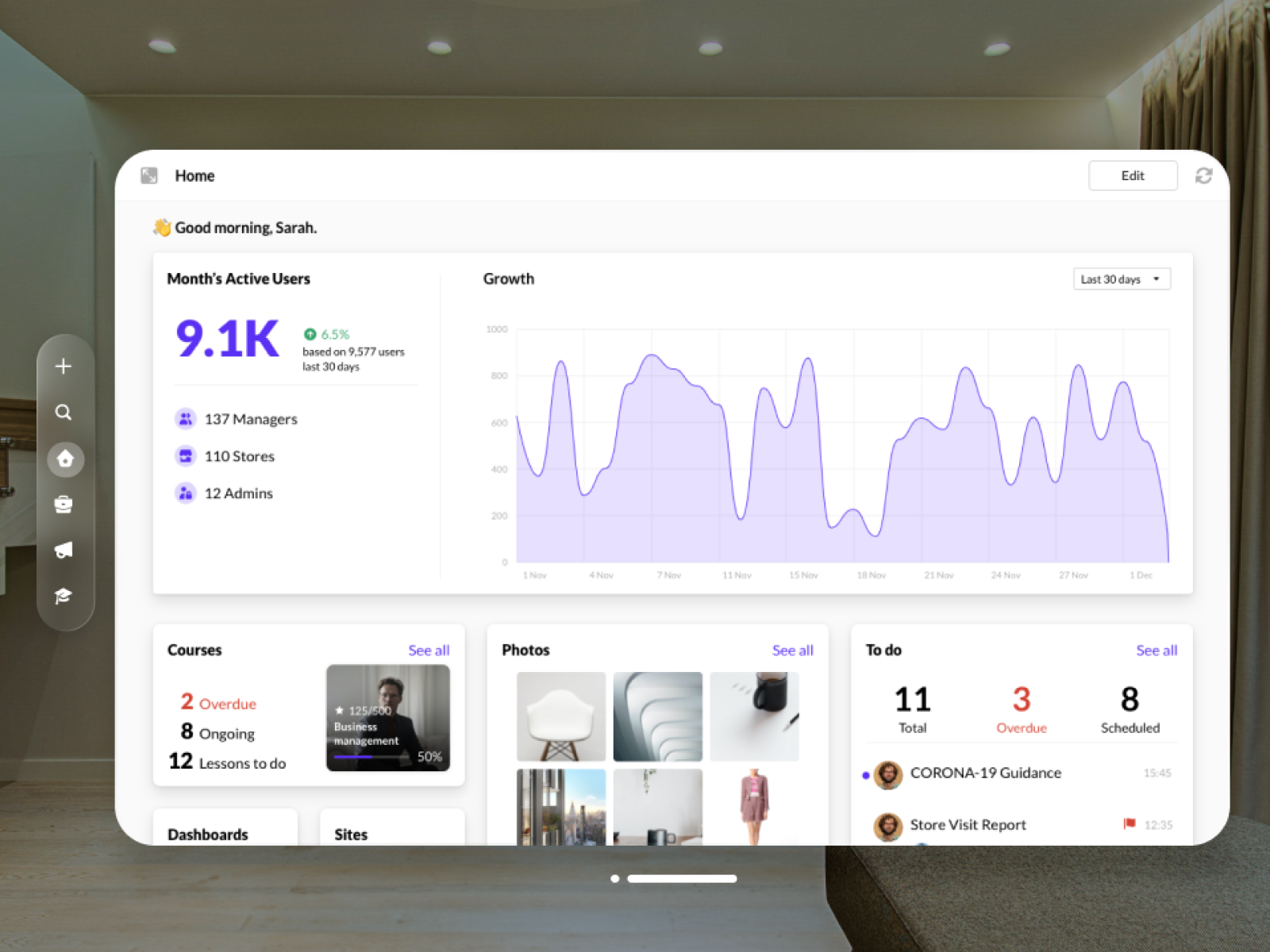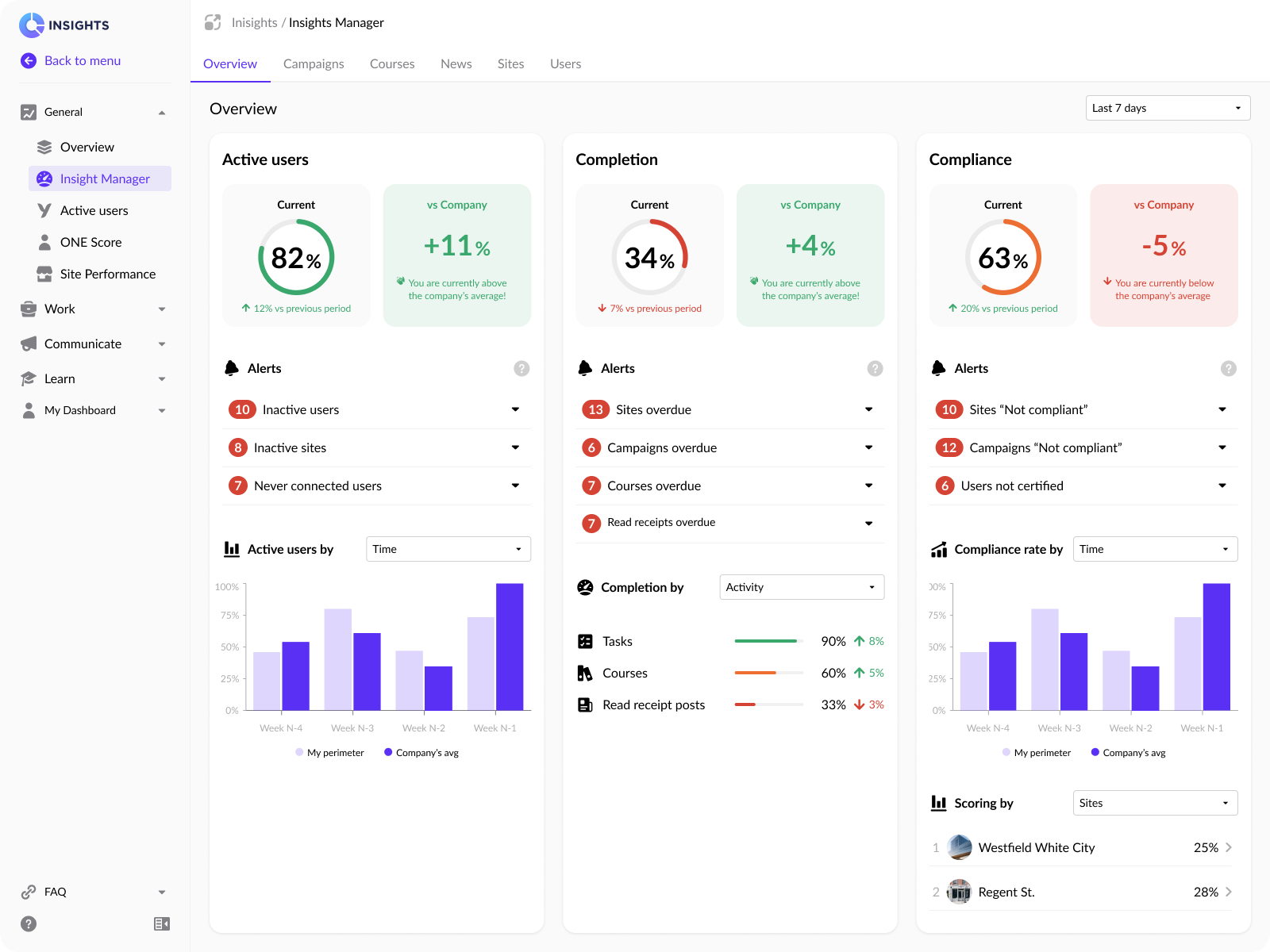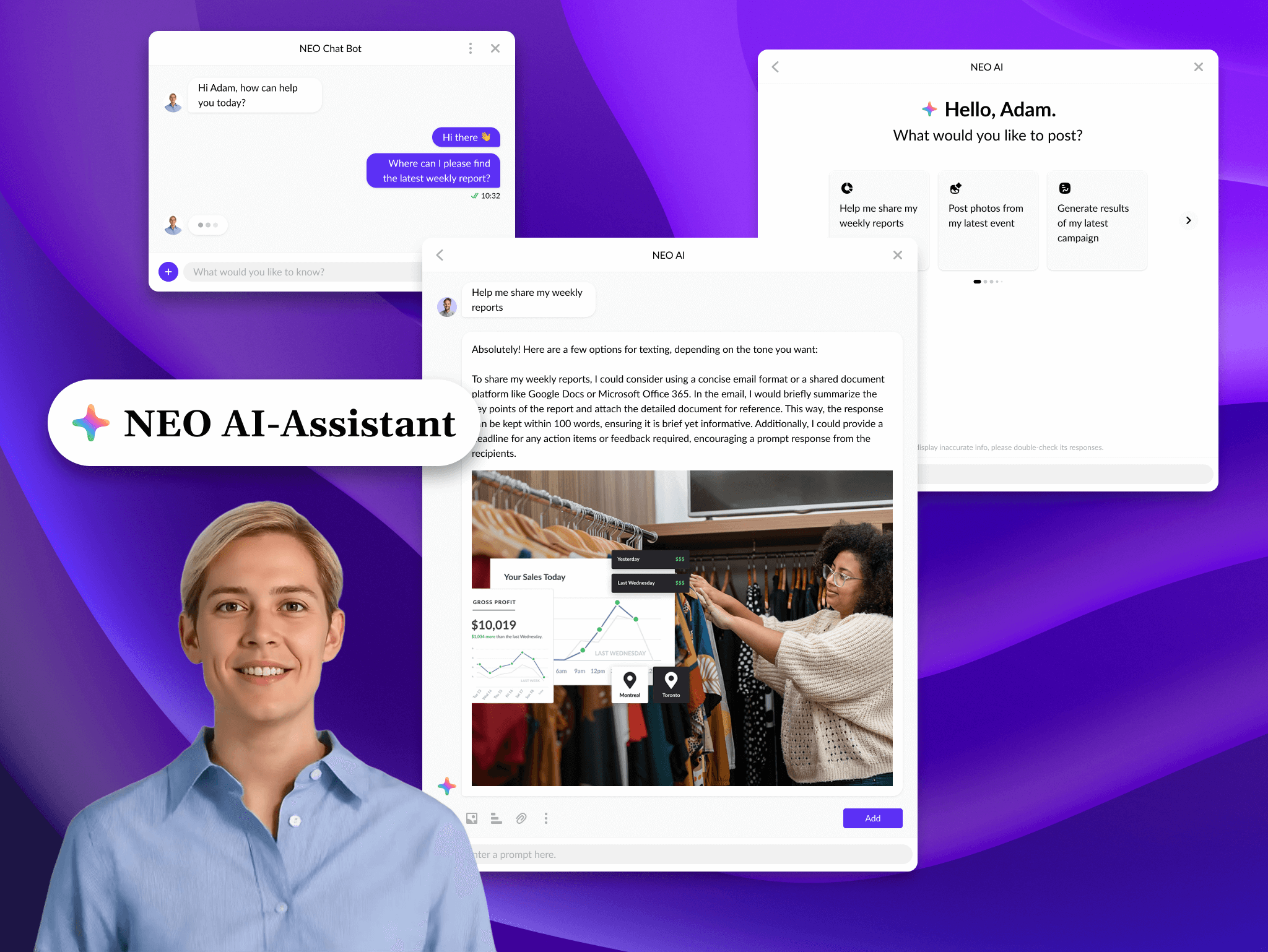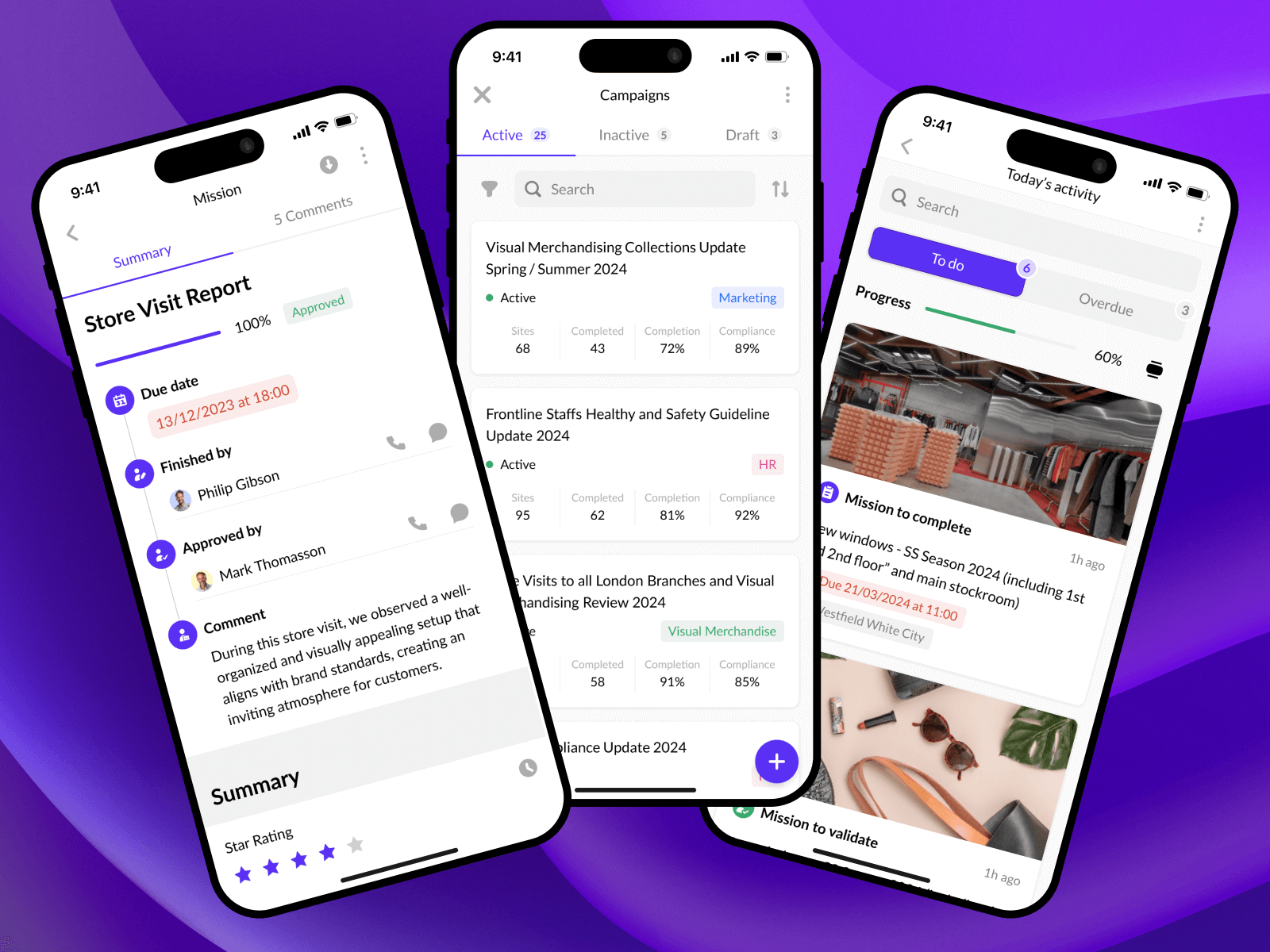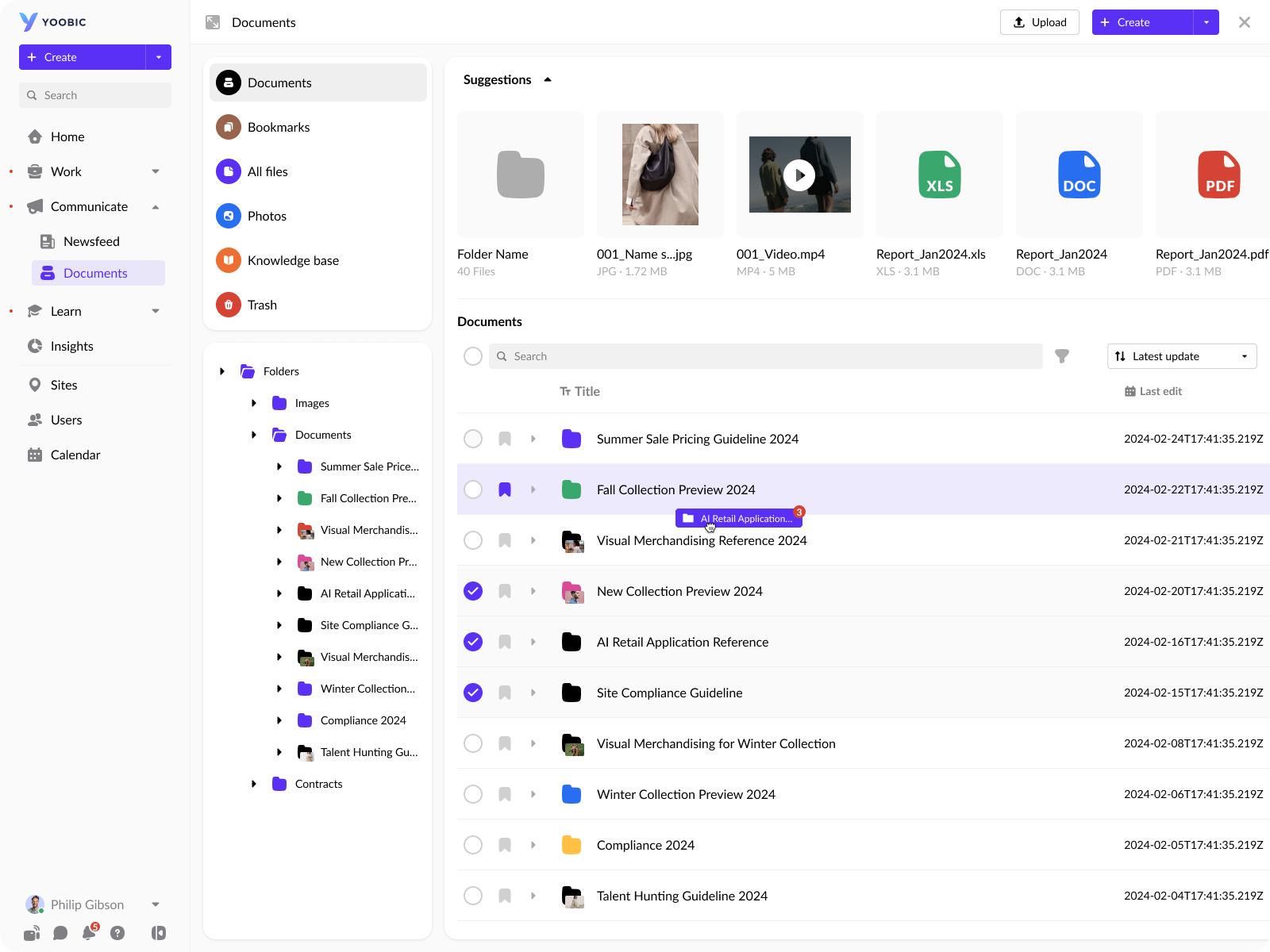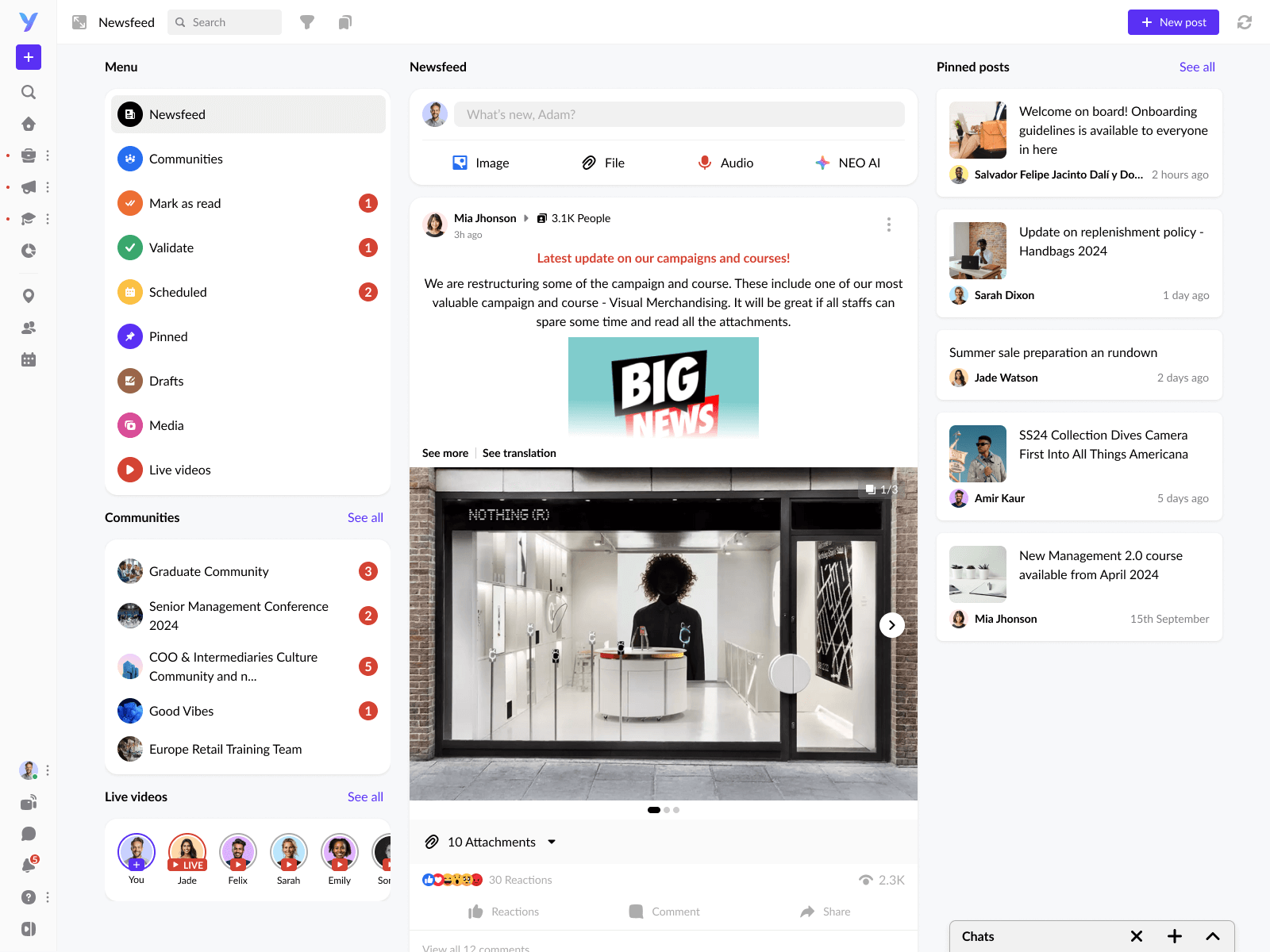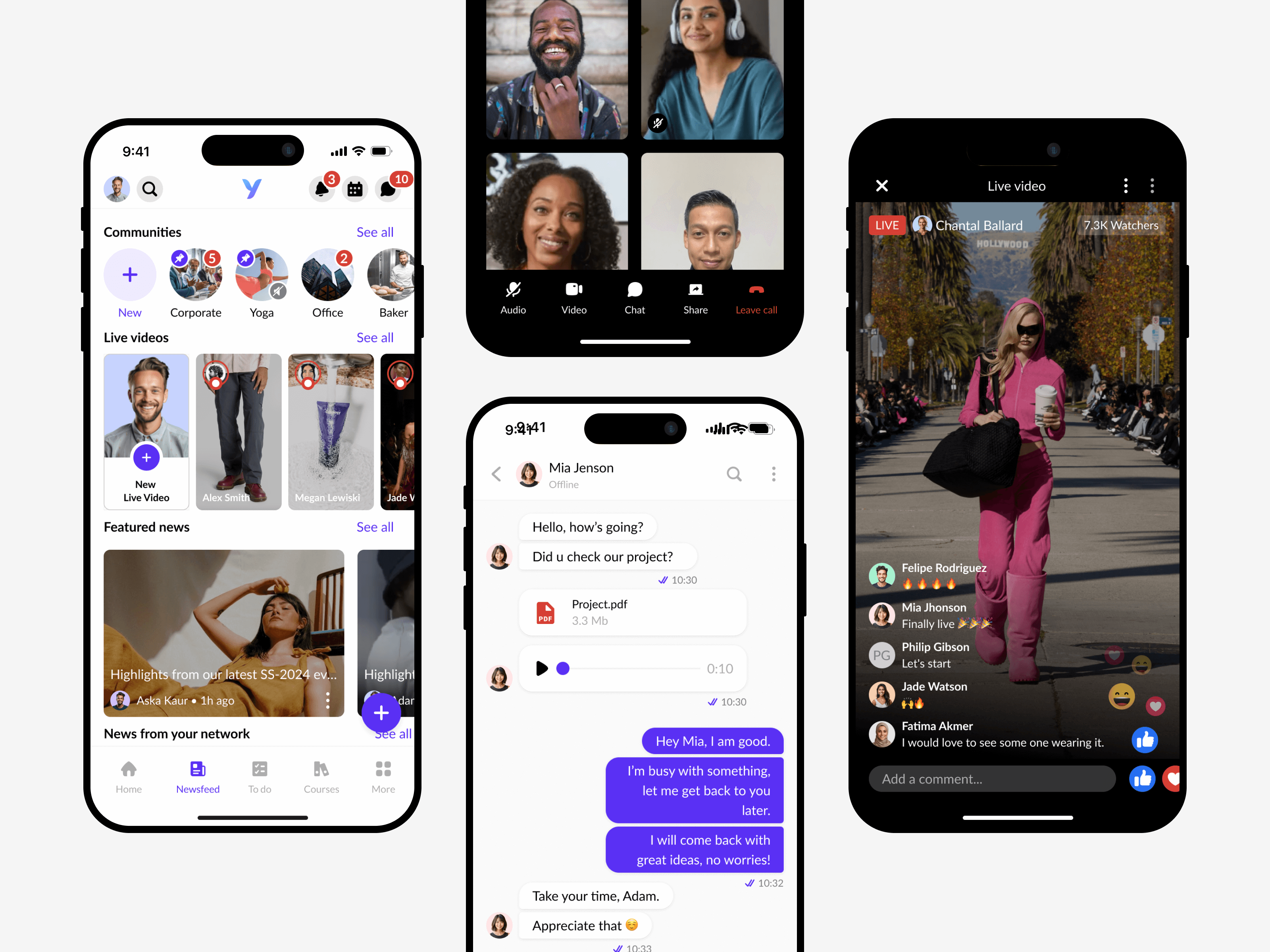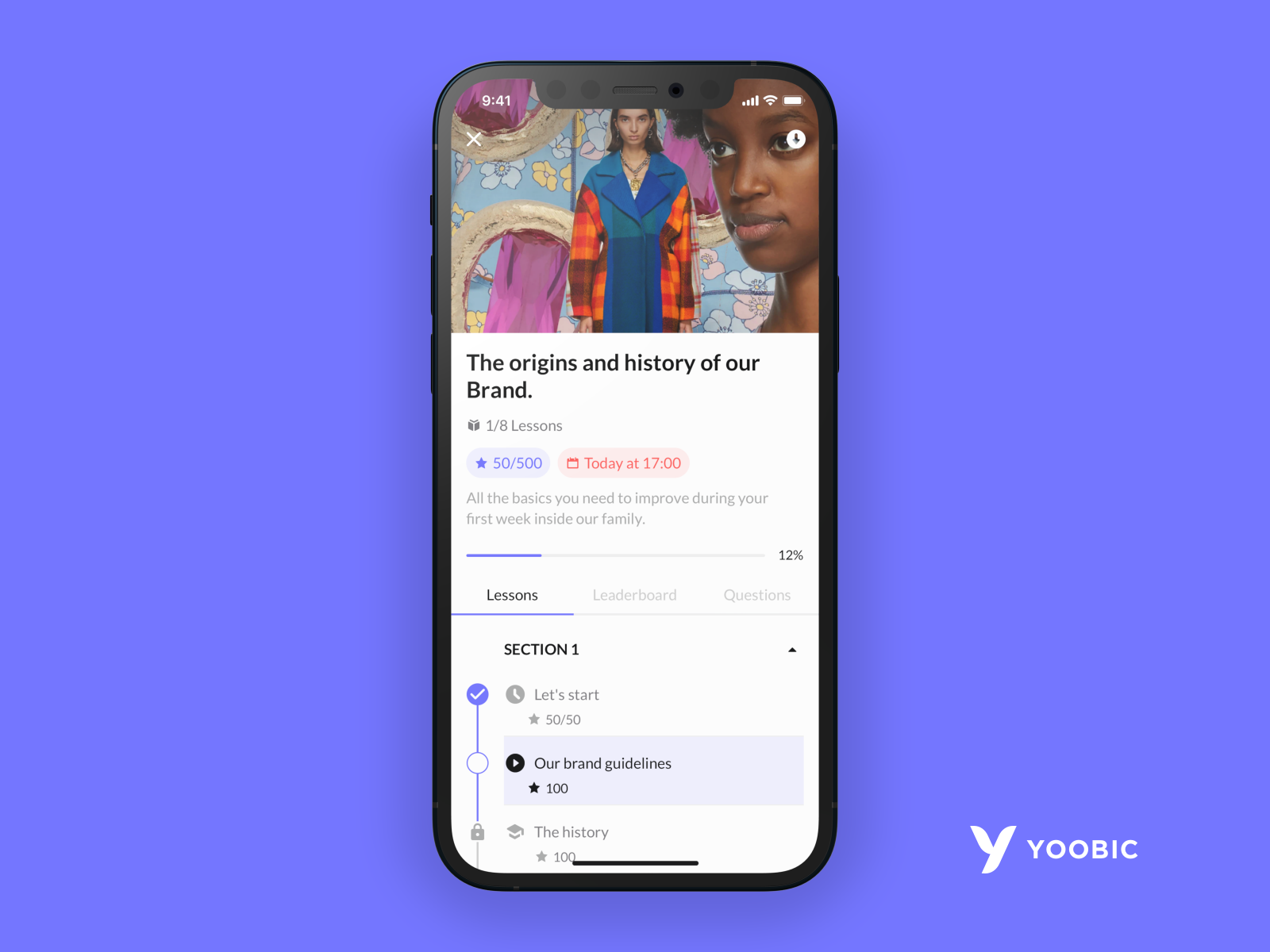
AI-Powered Frontline Employee Experience Platform.
B2B SaaS Platform
Web & Mobile (iOS & Android)
London, UK
As Head of Product Design, I led the design team for almost 7 years, focusing on delivering human-centered design solutions while managing and scaling a talented design team.
Role Overview & Results
My Role
Managing design strategy for web and mobile applications
User research, Prototyping, UX/UI design
Built and maintained YOBI Design System
Results
Increased app's MAUs and retention rate
Decreased design-to-development handoff time
Enhanced user engagement and satisfaction
Process

Validation with Data
At YOOBIC, we analyzed internal data to identify key areas of improvement across our SaaS platform for deskless workers:
- 30-35% of customer support requests highlighted issues with the platform's organization. Users found the numerous features disorganized, inconsistent, and hard to navigate, which hindered their ability to efficiently complete tasks.
- 40% of email inquiries focused on confusion surrounding task completion statuses and dashboard visibility.
- Approximately 30% of calls reported tasks or applications appearing to “disappear” as they transitioned between statuses (e.g., from "In Progress" to "Completed" or "Review Pending").
These insights emphasized the importance of restructuring the platform’s information architecture and streamlining feature accessibility to enhance the user experience for deskless workers.
Understanding the Problem
My goal was to understand the current frustrations with the existing solution. I gathered feedback from the business and our introducer partners in order to provide a better experience for introducers.
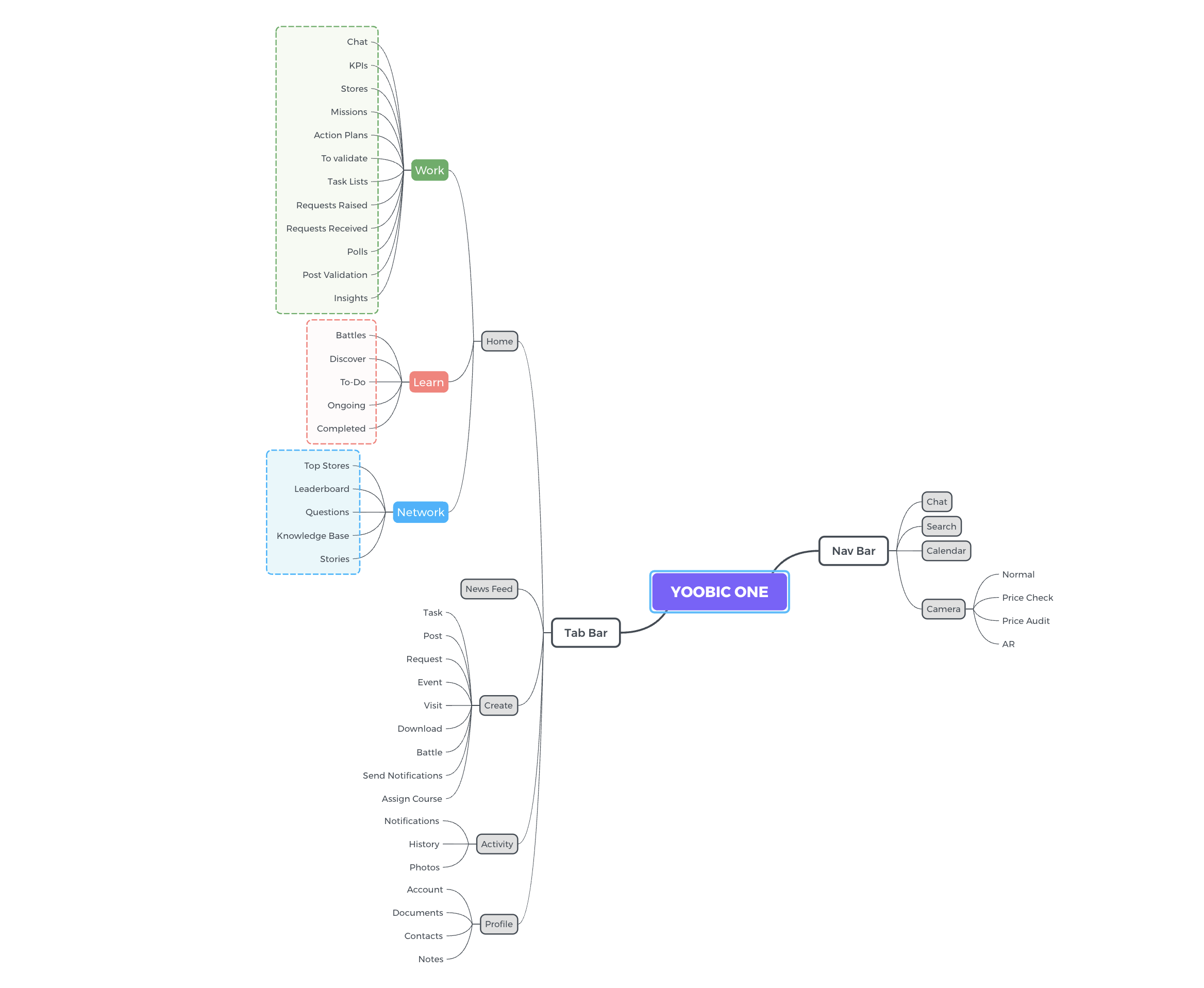
Design Challenges & Solutions
1. Efficient Task Management
Our users needed a streamlined way to manage daily tasks across multiple locations, often facing challenges due to the complexity of multi-site coordination. I conducted user research to identify pain points, which highlighted a need for a simplified, centralized solution that could be easily navigated by employees with varied levels of tech experience.
To address this, I introduced a modular task management interface, prioritizing clarity and ease of use. The design emphasized visual hierarchy and intuitive interaction, allowing users to quickly identify priority tasks, assign responsibilities, and monitor progress without clutter.
My approach included:
- User-Centric Design: I collaborated closely with end-users and cross-functional teams to understand specific needs across roles and locations. This feedback loop informed design decisions, ensuring the solution addressed real user problems.
- Modular Flexibility: Recognizing the diversity of workflows, I designed the interface to be modular, enabling easy customization based on the specific requirements of each site. This modularity facilitated faster adaptation to different environments and improved overall task completion rates.
- Visual Clarity: To support quick, on-the-go decision-making, I crafted a clean, minimalistic interface with clear visual indicators for task statuses, deadlines, and dependencies, reducing cognitive load and improving overall usability. This design solution not only improved daily task management efficiency but also empowered our users by providing them with a tool that adapted to their needs, ultimately leading to higher engagement and productivity across multiple locations.
2. Employeee Engadgement
To create a more connected and collaborative workforce, we developed a communication module specifically designed to foster engagement among employees. This module enables team members to exchange ideas, provide feedback, and communicate directly within the platform, breaking down traditional communication silos and encouraging cross-functional interactions. The platform’s design was crafted to promote spontaneous, yet purposeful, connections. Employees can reach out to colleagues, ask questions, and share updates or achievements in real-time, which encourages not only immediate feedback but also a sense of shared purpose and belonging. By allowing team members to connect with each other outside formal channels, we helped cultivate an environment of openness and support that strengthens relationships and increases morale across departments. I focused on designing a responsive, engaging interface that adapts effortlessly across devices, making it accessible for all employees, whether they’re on a desktop in the office or on a mobile device in the field. Through seamless interactions and a user-centered design, the module empowers employees to stay informed, motivated, and actively involved in their teams’ successes. This approach not only improves communication but also reinforces a culture where every voice is valued, ultimately driving higher engagement and productivity.

3. Enhanced Micro-Learning & Training
At YOOBIC, we recognized the need for a modern, engaging learning platform that empowers employees to develop their skills effectively. To address this, we developed a mobile-first Learning module that provides easy access to training resources anytime, anywhere.
I led the design of interactive learning experiences within this module, focusing on creating engaging microlearning content that includes videos, images, and documents. This approach facilitates quick onboarding of new employees and continuous skill development for existing staff. To enhance engagement, we incorporated gamification elements such as quizzes, points, badges, and leaderboards, motivating employees to actively participate in their learning journey.
Additionally, we implemented features for progress tracking and completion rewards, allowing employees to monitor their development and receive recognition for their achievements. This design not only makes learning more enjoyable but also fosters a culture of continuous improvement and collaboration among team members.

